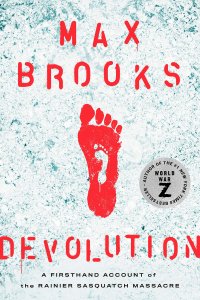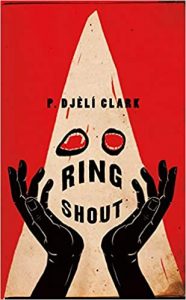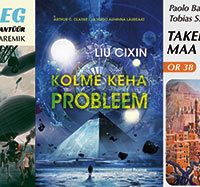2020 in Review: Fragments from a Fragmentary Reading List by John Langan

For the first three or four months of 2020, I had a difficult time focusing on anything – reading, writing, watching movies – for long enough to complete it. I devoted the spring to forcing myself to sit with a book or piece of writing or film long enough to engage it, and to keep engaging it until I was at the other side of it. The result was a summer in which reading, in particular, saved me in a deeply profound way it hadn’t for some time. So, to begin with, a sincere thank you to all the writers whose novels and stories helped me through this past year as only good fiction can. (And to the editors who work with them!)
At the end of 2020, three novels stood out not only as the best of the year, but of their respective authors’ careers: Grady Hendrix’s The Southern Book Club’s Guide to Slaying Vampires, Stephen Graham Jones’s The Only Good Indians, and Silvia Moreno-Garcia’s Mexican Gothic. Hendrix’s novel, a kind of spiritual successor to his earlier My Best Friend’s Exorcism, concerns the efforts of the members of a 1980s, pre-Oprah book club to reckon with James Harris, the handsome newcomer whose name nods in the direction of Shirley Jackson, even as the plot he sets in motion pays homage to the horror classics of the decade in which the novel is set. Jones’s novel follows the fates of four friends who took part in an illegal elk hunt-cum-slaughter, which created a metaphysical imbalance so severe it takes on flesh in order to wreak bloody vengeance upon them. Moreno-Garcia’s novel starts as a self-confessed homage to Daphne Du Maurier’s Rebecca, then becomes something much stranger, a hallucinatory fungal extravaganza. It’s fascinating to note the similarities among the novels, from their attention to characters positioned various degrees from their cultural centers, to their engagement with prior texts in the horror and Gothic traditions, to their willingness to follow their premises to the most extreme destinations. Of the three, I thought The Only Good Indians the most successful, in part because of its ending, which swings for the fence and sends the ball rocketing past it, but it was cheering to note the presence of each of the books on the major bestseller lists.
 There were a host of strong novels from established writers. Paul Tremblay’s Survivor Song imagines an extremely contagious and ferocious strain of rabies and portrays its outbreak in the Boston suburbs with an accuracy so intense as to be unnerving, particularly at our current historical moment. Danielle Trussoni’s The Ancestor takes the concern with heredity at play in her previous works of fiction and memoir and makes it the center of a neo-Gothic set in a remote castle in the Alps and featuring (possible) cryptids. Max Brooks’s Devolution: A Firsthand Account of the Rainier Sasquatch Massacre tells the story of a series of encounters between the inhabitants of a Utopian community and a group of Sasquatch, employing the faux-journalistic format of World War Z to almost surprisingly effective ends. With Worse Angels, the third in his Isaiah Coleridge books, Laird Barron brings his mob-enforcer-turned-PI across the border into the universe of his weird fiction, resulting in a narrative equal parts compelling and creepy. Gwendolyn Kiste’s Boneset & Feathers, the follow-up to her award-winning The Rust Maidens, focuses on a witch whose efforts to hide her identity run up against the threat of witchfinders returning to her village to burn her. The Boatman’s Daughter, Andy Davidson’s sophomore effort, sets a blend of noir and dark magic in a vividly evoked Arkansas bayou. Todd Keisling’s Devil’s Creek is an ’80-style novel dealing with the lingering after-effects in the surrounding community of a religious cult’s disastrous end. Ramsey Campbell’s The Wise Friend concerns a middle-aged father attempting to navigate his changing relationship with his teenage son and his son’s new girlfriend, who is most assuredly not as (and what) she seems; it’s a fine reminder of Campbell’s continuing efforts to challenge himself as a writer, his artistic restlessness. Daniel Kraus’s posthumous collaboration with George Romero, The Living Dead, is an epic companion to the late director’s six zombie movies, one that places the films within an overarching context, creating a whole greater than the sum of its parts.
There were a host of strong novels from established writers. Paul Tremblay’s Survivor Song imagines an extremely contagious and ferocious strain of rabies and portrays its outbreak in the Boston suburbs with an accuracy so intense as to be unnerving, particularly at our current historical moment. Danielle Trussoni’s The Ancestor takes the concern with heredity at play in her previous works of fiction and memoir and makes it the center of a neo-Gothic set in a remote castle in the Alps and featuring (possible) cryptids. Max Brooks’s Devolution: A Firsthand Account of the Rainier Sasquatch Massacre tells the story of a series of encounters between the inhabitants of a Utopian community and a group of Sasquatch, employing the faux-journalistic format of World War Z to almost surprisingly effective ends. With Worse Angels, the third in his Isaiah Coleridge books, Laird Barron brings his mob-enforcer-turned-PI across the border into the universe of his weird fiction, resulting in a narrative equal parts compelling and creepy. Gwendolyn Kiste’s Boneset & Feathers, the follow-up to her award-winning The Rust Maidens, focuses on a witch whose efforts to hide her identity run up against the threat of witchfinders returning to her village to burn her. The Boatman’s Daughter, Andy Davidson’s sophomore effort, sets a blend of noir and dark magic in a vividly evoked Arkansas bayou. Todd Keisling’s Devil’s Creek is an ’80-style novel dealing with the lingering after-effects in the surrounding community of a religious cult’s disastrous end. Ramsey Campbell’s The Wise Friend concerns a middle-aged father attempting to navigate his changing relationship with his teenage son and his son’s new girlfriend, who is most assuredly not as (and what) she seems; it’s a fine reminder of Campbell’s continuing efforts to challenge himself as a writer, his artistic restlessness. Daniel Kraus’s posthumous collaboration with George Romero, The Living Dead, is an epic companion to the late director’s six zombie movies, one that places the films within an overarching context, creating a whole greater than the sum of its parts.
 This year also saw a number of noteworthy debuts. Of these, Rachel Harrison’s The Return, Premee Mohamed’s Beneath the Rising, and Molly Pohlig’s The Unsuitable stood just a little higher than their fellows. In Harrison’s novel, a group of 20-something college friends must deal first with one of their group’s unexplained disappearance, then with her equally inexplicable reappearance two years later. When the friends decide to reconnect at a boutique hotel in the Catskills, the narrative takes a frightening, nightmarish turn. Mohamed’s novel concerns the efforts of sinister supernatural entities to return to Earth from their prison beyond space and time, with the only people able to oppose them a young genius and her lifelong friend. The resulting novel has the kind of chewy density of a nineteenth-century doorstopper, even as it offers a melancholy reminder that the worst sins are often committed by those closest to us. Pohlig’s novel combines the ghost story with the marriage novel, alternating third person passages of witty (and occasionally gruesome) narration with dialogues between the protagonist and her mother, who died giving birth to her but whom she believes lives on in the scar on her neck. It’s thrillingly strange work. To be frank, I find it difficult to pick a favorite among them, so let’s call this a three-way tie.
This year also saw a number of noteworthy debuts. Of these, Rachel Harrison’s The Return, Premee Mohamed’s Beneath the Rising, and Molly Pohlig’s The Unsuitable stood just a little higher than their fellows. In Harrison’s novel, a group of 20-something college friends must deal first with one of their group’s unexplained disappearance, then with her equally inexplicable reappearance two years later. When the friends decide to reconnect at a boutique hotel in the Catskills, the narrative takes a frightening, nightmarish turn. Mohamed’s novel concerns the efforts of sinister supernatural entities to return to Earth from their prison beyond space and time, with the only people able to oppose them a young genius and her lifelong friend. The resulting novel has the kind of chewy density of a nineteenth-century doorstopper, even as it offers a melancholy reminder that the worst sins are often committed by those closest to us. Pohlig’s novel combines the ghost story with the marriage novel, alternating third person passages of witty (and occasionally gruesome) narration with dialogues between the protagonist and her mother, who died giving birth to her but whom she believes lives on in the scar on her neck. It’s thrillingly strange work. To be frank, I find it difficult to pick a favorite among them, so let’s call this a three-way tie.
It would be wrong, however, not to mention the other writers who produced strong first novels in 2020, from John Fram (The Bright Lands), to Jessica Guess (Cirque Berserk), to Alexis Henderson (The Year of Witching), to Samantha Kolesnik (True Crime), to Elisabeth Thomas (Catherine House). I can’t wait to read each writer’s next book.
 In addition to novel-length works, there were several outstanding novellas published in 2020. P. Djèlí Clark’s Ring Shout uses horror tropes to interrogate the history of Ku Klux Klan violence in the 1920’s American south, concentrating on a trio of young African-American women who fight the Klan and its (even) less human allies. Laurel Hightower’s Crossroads is a gut-punch of a narrative beginning with a mother’s sudden loss of her child and proceeding to the lengths to which she will go to return him to life. Tonia Ransom’s Risen is a zombie story of a different stripe, told from the point of view of a zombie derived more from Haitian tradition than Romero movies. Extending what was a banner year for him, Stephen Graham Jones published two novellas, the first, Attack of the 50 Foot Indian, a fast-moving fantasia of Native American identity ending in a vision of transcendent escape, and Night of the Mannequins, a surreal take on the slasher narrative.
In addition to novel-length works, there were several outstanding novellas published in 2020. P. Djèlí Clark’s Ring Shout uses horror tropes to interrogate the history of Ku Klux Klan violence in the 1920’s American south, concentrating on a trio of young African-American women who fight the Klan and its (even) less human allies. Laurel Hightower’s Crossroads is a gut-punch of a narrative beginning with a mother’s sudden loss of her child and proceeding to the lengths to which she will go to return him to life. Tonia Ransom’s Risen is a zombie story of a different stripe, told from the point of view of a zombie derived more from Haitian tradition than Romero movies. Extending what was a banner year for him, Stephen Graham Jones published two novellas, the first, Attack of the 50 Foot Indian, a fast-moving fantasia of Native American identity ending in a vision of transcendent escape, and Night of the Mannequins, a surreal take on the slasher narrative.
As anyone following such short fiction outlets as Nightmare and Vastarien can attest, the horror story remains vibrant, to the extent that Undertow Press publisher Michael Kelly launched a new venue, Weird Horror. 2020 saw the release of several terrific collections. Daniel Braum’s Underworld Dreams brought together his continuing takes on the Aickmanesque strange story, while Thomas Ligotti’s presence informed Christopher Slatsky’s bizarrely wonderful The Immeasurable Corpse of Nature. Gordon White’s As Summer’s Mask Slips and Other Disruptions, Clint Smith’s Skeleton Melodies, and Robert Ottone’s Her Infernal Name and Other Nightmares drew on an assortment of horror traditions and narrative approaches. Adam Nevill’s Wyrd and Other Derelictions presented stories focused on location rather than character, resulting in a book of uncanny beauty and force. Richard Gavin’s Grotesqueries was the latest in the visionary Canadian writer’s assault on the heights of genre, a further development in his fiction. Emma J. Gibbon’s Dark Blood Comes from the Feet assembled a stunning group of stories whose elements ranged from punk rock litanies to an orphanage for sea monsters. Written in a voice at once lyrical, compassionate, and brutal, these stories announce the arrival of a mighty new talent, and mark their collection as the best of the year.
 I did read several nonfiction books worth a mention. Peter Counter’s Be Scared of Everything: Horror Essays, Claire Cronin’s Blue Light of the Screen, and Edward Parnell’s Ghostland: In Search of a Hidden Country mixed autobiography with elements of horror culture, including fiction, film, writers, filmmakers, folk traditions, urban legends, and strange experiences, to entertaining and enlightening effect. As its title suggests, Colin Dickey’s The Unexplained: Mythical Monsters, Alien Encounters, and Our Obsession with the Unexplained considered similar material from more of a cultural history perspective. Andy Sharp’s The English Heretic Collection brings together a decade and a half of semi-Fortean articles on English culture, history, and geography; I’m not sure about all of its claims, but it makes for fascinating reading.
I did read several nonfiction books worth a mention. Peter Counter’s Be Scared of Everything: Horror Essays, Claire Cronin’s Blue Light of the Screen, and Edward Parnell’s Ghostland: In Search of a Hidden Country mixed autobiography with elements of horror culture, including fiction, film, writers, filmmakers, folk traditions, urban legends, and strange experiences, to entertaining and enlightening effect. As its title suggests, Colin Dickey’s The Unexplained: Mythical Monsters, Alien Encounters, and Our Obsession with the Unexplained considered similar material from more of a cultural history perspective. Andy Sharp’s The English Heretic Collection brings together a decade and a half of semi-Fortean articles on English culture, history, and geography; I’m not sure about all of its claims, but it makes for fascinating reading.
So there you have it: a partial list of some of the books that supported me this past year. If you can afford to, I have no doubt their authors would appreciate your support.
John Langan is the author of two novels, The Fisherman (2016) and House of Windows (Night Shade 2009), and two collections of stories, The Wide Carnivorous Sky and Other Monstrous Geographies (2013) and Mr. Gaunt and Other Uneasy Encounters (2008). With Paul Tremblay, he co-edited Creatures: Thirty Years of Monsters (2011). One of the founders of the Shirley Jackson Awards, he served as a juror for its first three years. He lives in New York’s Mid-Hudson Valley with his wife and younger son.
This review and more like it in the February 2021 issue of Locus.
 While you are here, please take a moment to support Locus with a one-time or recurring donation. We rely on reader donations to keep the magazine and site going, and would like to keep the site paywall free, but WE NEED YOUR FINANCIAL SUPPORT to continue quality coverage of the science fiction and fantasy field.
While you are here, please take a moment to support Locus with a one-time or recurring donation. We rely on reader donations to keep the magazine and site going, and would like to keep the site paywall free, but WE NEED YOUR FINANCIAL SUPPORT to continue quality coverage of the science fiction and fantasy field.
©Locus Magazine. Copyrighted material may not be republished without permission of LSFF.







